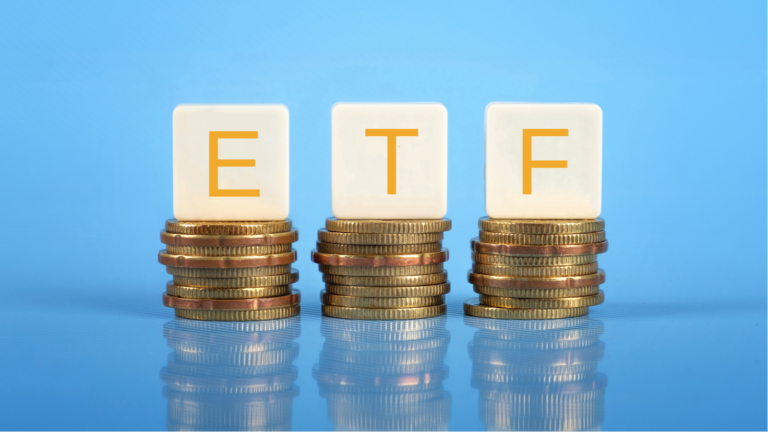Veteran MarketWatch columnist Mark Hulbert recently revived the supposedly dead 60/40 portfolio. Once, the top ETFs for a balanced portfolio combined equities and fixed income in a 60/40 split.
Hulbert predicts a “regression to the mean.” He suggests that the 60/40 portfolio, down 23.4% in 2022, could rebound in 2023. So far, it has surged over 17% through May. This yearly return is double the 7.7% historical average, dating back to 1793.
Hulbert’s insight implies that a consistent 7.7% annual return over 230 years isn’t disappointing. Consider this: a $5 investment in 1793 in the 60/40 portfolio would today be a staggering $128.4 million. Such is the magic of compound interest.
Still not convinced?
Vanguard Canada analyzed the 60/40 portfolio’s performance over the last decade. Through 2022, it had an annualized return of 6.1% for a globally diversified portfolio.
Vanguard’s senior investment strategist, Todd Schlanger, notes, “2022 may have been tough for investors, yet it brought asset class valuations down. Most are now fairly valued, except U.S. stocks, still priced above fair-value range.”
So how can you position yourself in light of these insights? Consider these best ETFs for a balanced portfolio.
Vanguard Total World Stock Fund ETF

As I said in the introduction, I’m looking for as much diversification as possible from my three ETF, global, 60/40 portfolio. The Vanguard Total World Stock Fund ETF (NYSEARCA:VT) accounts for 40% of the portfolio. An investment of $4,000 a decade ago would be worth $9,743 in June 2023.
Vanguard’s ETF tracks the performance of the FTSE Global All Cap Index, a collection (summary prospectus) of small, mid, and large capitalization stocks from 49 countries around the world, including the U.S. (59.1% of net assets), and emerging markets.
While it is considered an all-cap fund, large caps still account for nearly 70% of the ETF’s $27.1 billion in net assets with mid and small caps accounting for the rest. VT’s median market cap is $66.5 billion with 90% of the 9,543 stocks from developed countries and 10% from emerging markets.
Except for Apple (NASDAQ:AAPL), Microsoft (NASDAQ:MSFT), and Amazon (NASDAQ:AMZN), all of the holdings have a weighting of less than 1%, with the top 10 accounting for just 14%.
The top three sectors by weight are technology (21.3%), financials (14.02%), and consumer discretionary (13.87%).
Of utmost importance, VT’s expens ratio is a low 0.07%, or $7 for every $10,000 invested.
VanEck Morningstar SMID Moat ETF

The second of two equity positions is the VanEck Morningstar SMID Moat ETF (NYSEARCA:SMOT). It accounts for 20% of the portfolio. It got its start in October 2022
, so it doesn’t have a track record. However, the ETF is designed to invest in small and mid cap U.S stocks with long-term competitive advantages, often called wide-moat stocks.
“SMOT seeks to track the Morningstar US Small-Mid Cap Moat Focus Index, which targets a select group of at least 75 small and mid-cap companies with moats that are trading at attractive valuations, according to Morningstar’s equity research team,” stated the ETF’s Oct. 6, 2022 press release.
The Morningstar US Small-Mid Cap Moat Focus Index is the second collaboration between VanEck and Morningstar. The first was the VanEck Morningstar Wide Moat ETF (BATS:MOAT), which was launched in 2012.
It is far more expensive than VT with an expense ratio of 0.49%. The extra expense is for the additional research capabilities brought to the table by Morningstar.
The ETF’s $66.5 million in net assets are invested in 101 SMID stocks with a weighted average market cap of $15.6 billion and price-to-book and price-to-earnings of 14.3x and 2.5x, respectively. This helps makes it one of those best ETFs for a balanced portfolio.
The top three sectors by weighting are technology (19.64%), consumer discretionary (19.07%), and industrials (16.66%).
Fidelity Total Bond ETF

The Fidelity Total Bond ETF (NYSEARCA:FBND) accounts for the entire 40% of fixed income in the portfolio. An investment of $4,000 at its inception in 2014, would be worth $4,632 in June 2023.
In eight calendar years, FBND has delivered positive returns in four of those years. In three others, the annual loss was less than 1%. If not for the bond meltdown in 2022, it would have been an exceptionally good ETF to own to protect your portfolio on the downside.
The actively managed taxable bond fund seeks to generate significant income from its $4.0 billion in net assets. At least 80% of its portfolio is invested in investment grade debt securities. It can also invest up to 20% of its net assets in high yield debt securities. It uses the Bloomberg U.S. Universal Bond Index as a guide for investing the net assets.
The ETF’s dividend yield is a reasonable 3.71%. Its top 10 holdings account for 33.3% of its net assets. It has a total of 2,659 holdings with North America accounting for 98.62% of the portfolio and 1.38% in Latin American debt securities.
The average weighted coupon is 4.19% with a duration of 6.03 years. Over the past five years through March 31, FBND has outperformed both the Bloomberg US Aggregate Bond Index and the Bloomberg U.S. Universal Bond Index with an annualized return of 1.69%, 78 basis points higher than the former, and 64 higher than the latter.
On the date of publication, Will Ashworth did not have (either directly or indirectly) any positions in the securities mentioned in this article. The opinions expressed in this article are those of the writer, subject to the InvestorPlace.com Publishing Guidelines.
